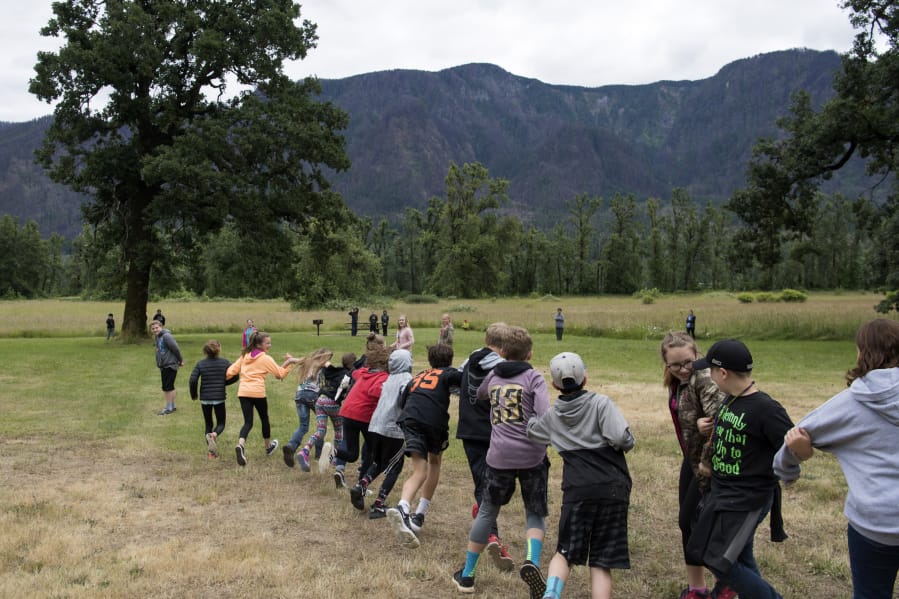SKAMANIA — Set against the background of the charred Columbia River Gorge, a group of Washougal sixth-graders stood from a crouch and stretched their arms high to the sky.
This, a group of United States Forest Service field rangers explained, is what succession looks like: the process of ferns, then grasses and eventually trees growing in a fire-ravaged landscape.
“To have this, it’s an interactive way for kids to talk about it,” said Kat Schut, a field ranger stationed in the Columbia River Gorge National Scenic Area. She spent last fall fighting the Eagle Creek Fire herself.
Finding interactive ways to talk about nature was the theme for the week, as students gathered in the park for Outdoor School, an annual program hosted by the Friends of the Columbia Gorge.
“We’re trying to provide information for the next generation of Gorge stewards,” said Kate Lindberg, the organization’s outdoor programs coordinator.
About 60 Canyon Creek Middle School students gathered at the Beacon Rock State Park day use area Thursday to learn about native plants, wildlife, the history of Lewis and Clark’s westward trek and, perhaps most visually, last year’s Eagle Creek Fire. Though the Washington side remained largely unscathed by the 55,000-acre wildfire that started after a Vancouver teenager threw fireworks into Eagle Creek Canyon in September, students were able to point out the scarred earth and blackened trees just across the Columbia River.
Students even pretended to be the fire itself. Most students stood still, pretending to be trees. Then two students pretended to be the wildfire, tagging then dragging their tree-classmates along with them to simulate how quickly a fire can spread.
But the point Forest Service officials are trying to share with students, Schut said, is that there’s a silver lining to fire. New species are returning to the forest. Dry, thick underbrush has been cleared, allowing native species to return. New generations of trees can now grow.
“I think our biggest point is fire is good and bad,” she said.
Kathy Hansberry, a math and science teacher school, has been working up to Outdoor School with lessons about the Missoula Floods, topography and the natural resources in the Columbia River Gorge.
This, she said, gives students a hands-on opportunity to see what they’ve learned in class brought to life.
“They personally experience the actual nature and see some of what they’ve learned in science,” she said.
During lunch, 12-year-old P.J. Hopmeier and her friends rattled off a list of the new things they’d learned that day: how to measure tree height, how hard it can be for wolves to sneak up on deer in the woods and what kinds of plants can make you sick if you try to eat them.
“We learned about our environment and how to take care of it,” P.J. said.
Brodee Dowd, 13, said he likes learning about nature.
“It has a lot of native things that shouldn’t be destroyed,” Brodee said of the forest, before running off to play in the field with his friends.




